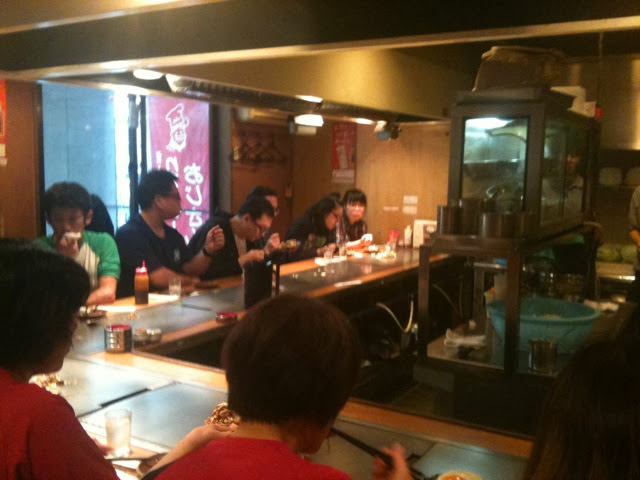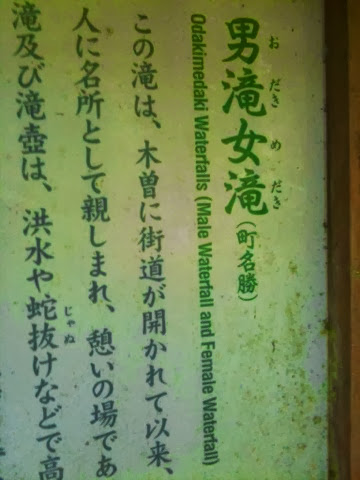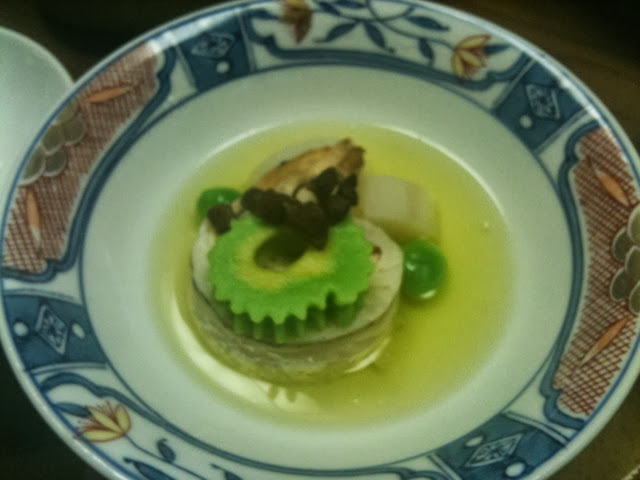Today was our day to hike Mt. Ontake, the second highest volcano in Japan, one of the hundred famous mountains of Japan, and a sacred mountain that draws Shinto pilgrims to climb the path to the top. Not so much today, though, as it was pouring rain.
One of the many shrines along the hiking path.
The bus ride from Kiso-Fukushima to the trailhead took an hour. Gorgeous mist-shrouded scenery, looking like a wood-block print. We even saw more monkeys along the road! Roxana says these monkeys are famous for soaking in the hot springs when the ground is covered in snow.
By good chance, we had made a quick stop at an enticing bakery on our walk to the bus this morning, and look at the pastry Dave choose because it had a chocolate filling:
We hiked for an hour, but the rain became even more intense, & we decided to turn around and take the 12:45 bus back to Kiso-Fukushima and a soak in the bath.
Temperature at bottom of trail.
We had a bit of time to wait for the bus, and discovered a bare-bones cafe in a building near the bus stop. But it had heat, and absolutely the best ramen I have ever had!
Not that we have been eating poorly; our inn is renowned for its food. Here's pics of tonight's dinner. There are multiple pics because there are multiple courses. We are served in a private tatami-floored dining room.
1st course place-setting. The presentation is beautiful. That's sashimi in upper right, with a dipping sauce; a hollowed out persimmon with a compote in the hollow, at the top; and several elegant tidbits surrounding 2 pieces of pork on the bottom plate.
Sukiyaki was also part of first course.
Also in first course. Various pressed fish cakes in a warm broth.
2nd course (you remove the leaf wrapping to eat the baked fish inside).
3rd course. Lotus root in a seaweed base. Note the little basket in which it is served - presentation is everything!
4th course. A dumpling.
I missed a photo of the 5th course, a clear broth with a shellfish that could have been a scallop - being allergic to scallops, I passed. That's also the course where the rice was served - Roxana says that in gourmet Japanese meals, the rice is always part of the last course (before dessert).
6th course - dessert. Those are melon balls with a sweet bean paste and a custardy base in a sweet syrup.
So you can see we are definitely not going hungry - and the breakfasts are almost as hearty!
We leave this inn tomorrow for more walking on the Nakasendo to Tsumango, which Roxana says is even more beautiful than Narai - hard to believe.

















































